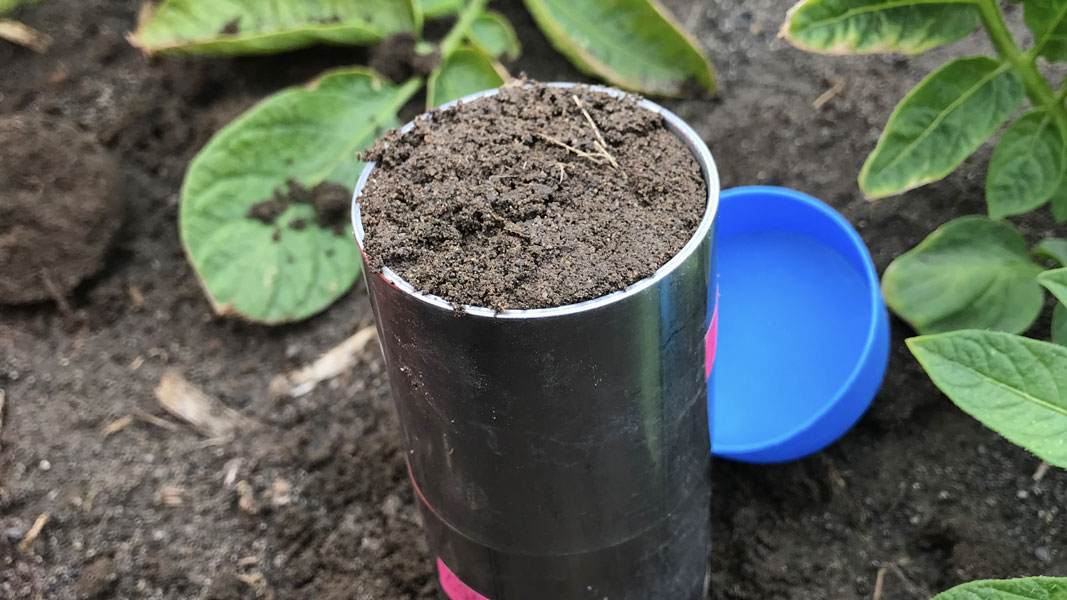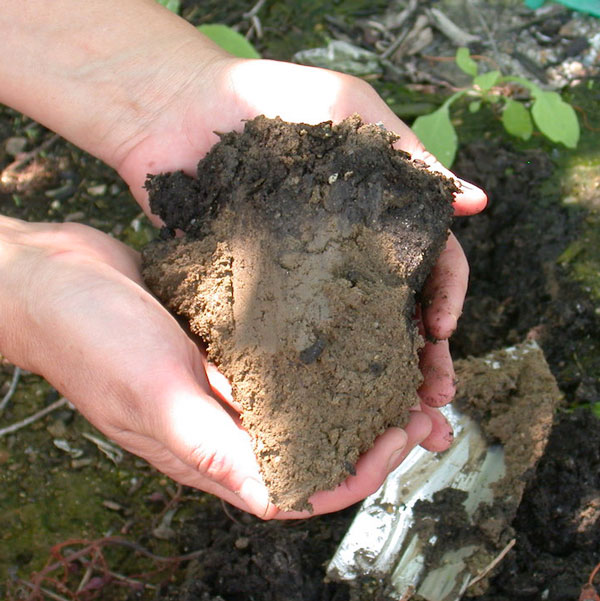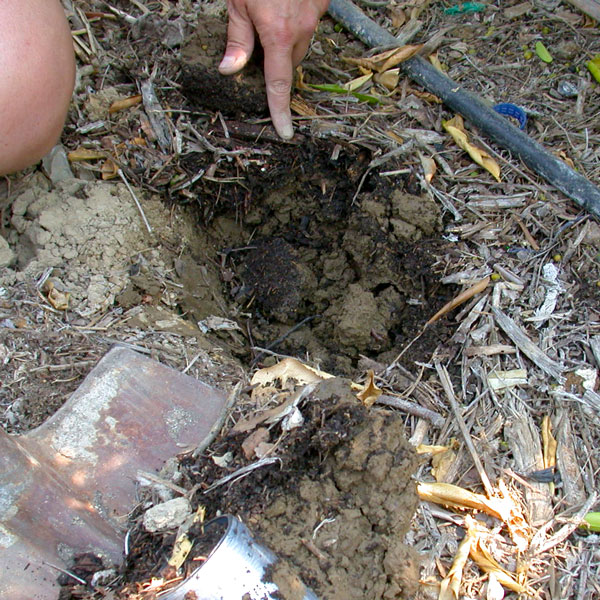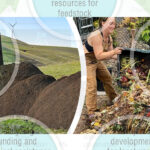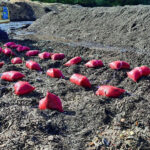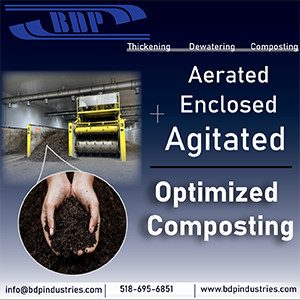Top: Soil test results are in percentages: the percent of the total weight in the soil that consists of carbon as well as the percent of total nitrogen. Photo by Deirdre Griffin LaHue, Washington State University
 Sally Brown
Sally Brown
Compost has been rightfully seen as one of the best tools we have to increase carbon in soils. I’ve talked and talked some more about the benefits associated with enriching soils with organic matter. One thing I haven’t talked about is how you actually measure soil carbon. This is pretty inexpensive and easy to do.
Measuring the organic matter concentration in soils is referring to organic carbon (the backbone or about 58% of soil organic matter). You can measure the percentage of carbon (C) in a soil with a soil sample taken from the horizon of interest by combustion. This will give you the total C as well as the total nitrogen (N) in the soil. It will not distinguish between inorganic C (carbon in carbonate minerals) and organic matter C. That is not normally an issue in agricultural soils. While the test can’t be done at home, it is a fast, cheap and easy measure. Any number of soil testing labs can do this. Any lab that tests your compost for the US Composting Council’s Seal of Testing Assurance (STA) compliance will be able to do this test.
The test results are in percentages — the percent of the total weight in the soil that consists of carbon as well as the percent of total N. If you have 100 kg of soil with a 2% C concentration you have 2 kg of carbon. Typically, the N concentration will be a small fraction of the total C, often about 10%. That same 100 kg of soil with 2% C would likely contain about 200 g of total N. If you increase the percent of C (%C) in soils, you likely have improved the soil. That means better water holding capacity, better structure and often higher yields. It doesn’t always mean that you have increased the total carbon stored in the soil.
Calculate The Bulk Density
While it is true that soils with higher %C will be healthier, the %C is not the same thing as the total amount of carbon stored in the soil. To calculate the amount of C (and N) stored in the soil you also need to measure the bulk density. The bulk density is the weight per unit of volume of a soil and it is typically expressed as grams/cubic meter (g cm3) or tons/m3. You can do this test on your own with some effort and almost no cost. Below is a video that shows how you can do it. You need a can with both the top and bottom removed, a hammer, a plank and a shovel. That is all.
Not all soils weigh the same. For example, soils high in clay are referred to as “heavy soils.” The weight of the soil per unit volume is a function in part of the soil texture. It is also related to how much carbon is in the soil. The higher the carbon, the better the structure of the soil. Carbon will help to aggregate the soil, i.e., to group all of the clay particles into aggregates. The more C you have in the soil, the better it will be aggregated and the lower the bulk density will be. It is counterintuitive if you are thinking of it in terms of people and their diets. The more we eat, the heavier we get. The more carbon you feed a soil, the lighter it gets. That may make you want to turn into soil. Give yourself enough time, and there is a good chance that transformation will happen on its own. If you have successfully increased the %C in the soil you have almost certainly also reduced the bulk density. A soil with 5% C and a bulk density of 1 g/cm2 will have a lot less C in it than a soil with 5% C and a bulk density of 1.33 g/cm2.
Math Class
A few calculations will make this clear. First let’s see how heavy soil is. If you have attempted to shovel some and taken out your back in the process you may know this without looking at the equations.
- Weight of soil: Bulk density x depth x hectare = weight of the soil per hectare
1.33 g cm3 = 1.33 tons m3
15 cm depth = 0.15 m depth1.33 T- soil/ m3 * 0.15 m depth * 10,000 m2 /hectare = 1,995 tons of soil per hectare
- Weight when compost added: Let’s say you’ve added compost to that soil in sufficient quantity and over sufficient time that enhanced plant growth combined with the organic matter from compost has done its work and the bulk density is now down to 1.0 g cm3
1.0→T- soil * 0.15 m depth * 10,000 m2/hectare = 1,500 tons of soil per hectare
You can see that the reduced bulk density has had a big impact on the weight of the soil. Good for soil health, even good for the health of your back if you opt to shovel.
- Calculating amount of C stored: To figure out how much C is stored in the soil you just add the carbon content (%) into the equation. Looking at the same bulk densities, we can play around with the changes in soil carbon. For that first soil with a bulk density of 1.33 g cm3, we can say that the total C was 2%. That gives us this equation:0.02 T C/T soil (2%= 0.02) * 1.33 T m3 * 0.15 m- depth * 10,000 m2/ha = 39 tons of C per hectare
- Amount of C stored when compost added to soil: Let’s say that by adding all of that compost and having patience, you have doubled the C content to 4%. How much C is now stored in the soil?
0.04 C/T soil *1 T m3 *0.15 cm depth * 10,000 m2/ha = 60 tons of C per hectare.
For this example, while you have doubled the %C in the soil you have only increased the amount of carbon stored in the soil by 65%.
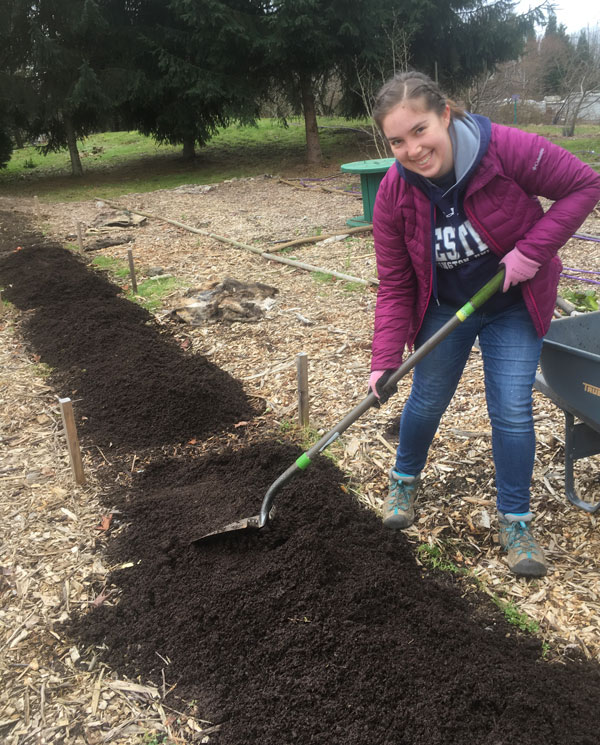
Assuming that the compost is 50% C means that an application of 11 tons/hectare of compost is adding 5.5 tons of C.
When you think of this in terms of compost addition, the results can be a little bit surprising. A normal application rate of compost is 5 tons/acre or about 11 tons/hectare. Assuming that the compost is 50% C (remember that all composts contain a sizable mineral or inorganic fraction and that the organic component is not just C), that means that the 11 tons/hectare of compost is adding 5.5 tons of C. Assuming that none of that added organic matter gets eaten (aka mineralized) you would need to add about 40 tons/hectare of compost to get the organic matter increase in the example above.
- Adding everything up for increase in soil C stored: Let’s see what a single application of compost would do to the C storage starting with the 1.33 g cm3, 2% organic matter soil:5.5 added tons C per 11 ton ha compost + 39 tons C in soil = 44.5 tons C new total44.5/ 39 = 14% increase in soil C, which is likely within the margin of error for measures of soil C
That 5.5 tons of added C gets even smaller when you think about it in the already healthy soil — just an 8% increase.
This exercise is not to discourage you from adding compost to soil. It is, first of all, a how-to guide to measuring changes in carbon in soils. And second, it is a way to say breathe deep and have patience. While you are changing the soil, that added carbon storage may not be something you can measure after your first compost application.
Sally Brown, BioCycle Senior Adviser, is a Research Professor at the University of Washington in the College of the Environment.


